|
|
|
|

|
|
|
|
|
|
Emilio De Luca for over 40 years follows the same procedures tailored than once with the passion and the skill of the great Neapolitan Artisan Tradition
|
|
|
|
|
|
|
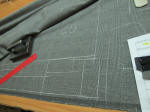
|
|
|
|
Trackin Pattern to Fabric |
|
the architectural design stage. As custom-tailoring dictates, the process is unique for each garment |
|
|
|
|
|
|
|
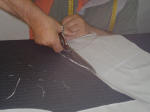
|
|
|
|
The Cut |
|
the most intricate phase. Each cutter scrupulously respects every minute detail of the pattern |
|
|
|
|
|
|

|
|
|
|
Boot-shaped Chest Pocket |
|
two strips of fabric are basted, sewn, and then opened by hand with scissors and turned inside-out along the horizontal. Lastly, the pipings are pressed.. |
|
|
|
|
|
|
|
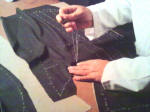
|
|
|
|
Canvas Basting |
|
canvas constitutes the garment's structural soul, guaranteeing soft but reliable fit. |
|
|
|
|
|
|
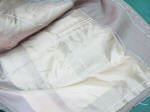
|
|
|
|
The Lining |
|
the jacket's inner lining fabric is the garment's stamp of eleggance and also enhances soft, reliable fit. The curved cut, technically the most difficult in terms of both execution and finishing, is done solely by hand. |
|
|
|
|
|
|
|
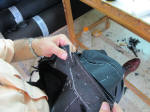
|
|
|
|
The Collar |
|
the scollo a martello, has been accomplished by pressing the fabric into shap first,then basting and trimming it. |
|
|
|
|
|
|

|
|
|
|
The Sleeve |
|
first, the sleeve insert is basted into place to allow greater control over the shoulder to body drape and fit. The sleeve is then finished by hand. |
|
|
|
|
|
|
|

|
|
|
|
Hand-Finished Canvas |
|
Hand-finishing inside the jacket completes the process begun with canvas basting, giving the garment its final graceful form |
|
|
|
|
|
|
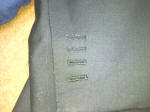
|
|
|
|
The Buttonhole |
|
the initial marking is cut and basted by hand, then stiched again and reinforced laterally for extra, elegant thickness. |
|
|
|
|
|
|
|

|
|
|
|
The Buttons |
|
the last step in jacket tailoring, meticulous hand stiching of the buttons provides extra hold and highlights the garment's beauty and elegance. |
|
|
|
|
|
|

|
|
|
|
Pressing |
|
final pressing lends softness and absolute hold for the garment's fit. Traditional irons weighing 7 kilos and the ciucciariello |
|
|
|
|
|
|